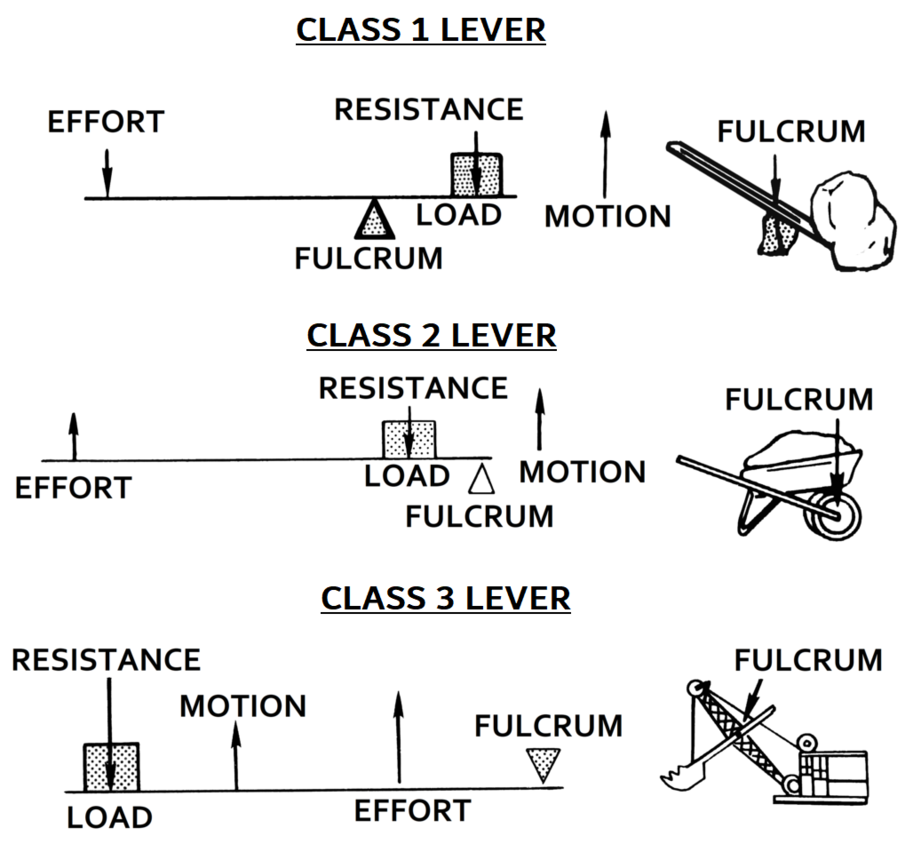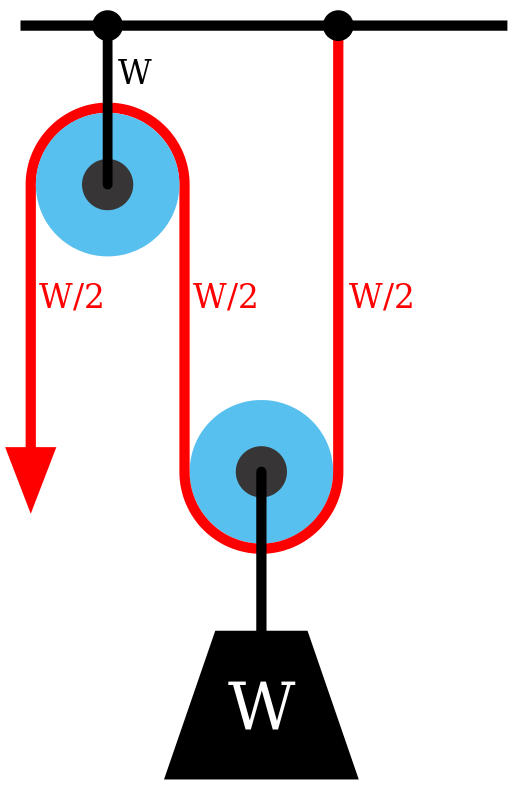Mechanical Advantage Calculator
If you ever wondered how a lever, a pulley, or perhaps a wedge makes your life easier, you've come to the right place: this mechanical advantage calculator will tell you by what factor do these simple machines amplify the force. This article will explain to you how to calculate the mechanical advantage of a lever, pulley, screw, wedge, ramp (inclined plane), and wheel & axle - six simple machines - and provide you with the mechanical advantage formula for each of them.
We made a video explaining mechanical advantage! Watch it here:
What are simple machines?
Simple machines are six basic mechanical devices defined by Renaissance scientists. In essence, they are elementary mechanisms that amplify the force you use to move objects.
For example, a lever multiplies the force you use to push one of its ends to lift the other (loaded) end. Many other, more complicated machines are created by putting together these simplest 'building blocks'.
Each of the simple machines takes advantage of the fact that work is equal to force multiplied by distance (as you can see in the work calculator). Each device increases the output force at the cost of decreasing the distance traveled by the load. This way, the work done by the load stays equal to the work done by the force you've applied.
How do I calculate the mechanical advantage?
By definition, the mechanical advantage is the ratio between the output force and the input force:
MA = output force / input force
If you expand the Input and output forces box of this mechanical advantage calculator, you will be able to determine the output or input force for each of the six simple machines.
In the text below, you will find the formulas that will allow you to establish the mechanical advantage of each of these machines based solely on their geometry.
How do I find the mechanical advantage of a lever?
The mechanical advantage of a lever is calculated according to the formula:
MA = effort arm / load arm
where:
effort arm– Distance between the point of effort and the fulcrum; andload arm– Distance between the point of resistance and the fulcrum.

In fact, we can distinguish three kinds of levers, as shown in the picture above. Each of them is characterized by the following:
- Effort – Simply the point where you apply the input force;
- Fulcrum – The point that remains stationary;
- Resistance – The load; and
- Motion – The direction of motion after the force has been applied.
✅ Omni Calculator has a tool dedicated only to levers: discover our lever calculator!
Mechanical advantage of a wedge

A wedge is a simple tool in the shape of a triangle. It can be used to split an object into two parts or to lift heavy objects. The mechanical advantage formula for a wedge is dependent on its geometry:
MA = width / length
- Width - Measured in the horizontal direction (see the picture); and
- Length - Measured in the vertical direction (see the picture).
Mechanical advantage of a pulley

As visible in the figure above, a pulley is a system made of wheels and ropes that connect them. Two wheels make one pulley.
To calculate the mechanical advantage of such a system, simply use the following equation:
MA = 2 × n
where n is the number of pulleys directly attached to the object.
If you were looking for a system of two non-identical wheels connected by a belt loop, you should head straight to our pulley calculator. And if you're searching for applications of mechanical advantage in other systems, check out our great winch size calculator.
Mechanical advantage of a screw

A typical screw consists of two parts: a threaded cylindrical shaft and a head. To determine the mechanical advantage, you will need two characteristics of the thread (helical ridges on the screw):
- Diameter of the screw shaft; and
- Lead of the thread. In simple screws, the lead is equal to the screw's thread pitch, or the distance between two adjacent threads. In double- or triple-start screws, it is defined as the distance (parallel to the screw's axis) the screw travels in one complete revolution of the shaft.
The mechanical advantage formula for the screw is:
MA = π × diameter / lead
Mechanical advantage of a ramp (inclined plane)

A ramp, otherwise known as an inclined plane, is a flat surface tilted at an angle to the horizontal. It is similar in shape to a wedge - in fact, a wedge in nothing but a portable inclined plane. Also, a screw is essentially an inclined plane wrapped around a cylinder.
Our mechanical advantage calculator can find the mechanical advantage of a ramp from two different formulas:
MA = L / V
MA = 1 / sin Θ
If you analyze these equations more closely, you will find that they are equivalent: sin Θ = V / L.
Mechanical advantage of a wheel and axle

As the name suggests, a wheel and axle is a machine consisting of two parts: a wheel (the green part in the picture above) and an axle (the yellow part). These two elements rotate together, and the force is transferred between them. If you apply a small force to the wheel on the outside of the machine, it will be transferred to the smaller axle and amplified.
How do you calculate a mechanical advantage of a wheel and axle? All you have to do is apply the following formula:
MA = wheel radius / axle radius
If you don't know the radius of one of the elements, but you know its circumference, head straight to our circumference calculator to determine the radius without tedious hand calculations.
FAQs
What is the mechanical advantage of a wedge with length 20 cm and width 4 cm?
The answer is 0.2. This is because the formula for the mechanical advantage of a wedge is MA = width / length. Hence, plugging in our data, we get MA = 4 / 20 = 0.2.
How do I find the mechanical advantage of an inclined plane?
To determine the mechanical advantage of a ramp, follow these steps:
- Determine the angle
Θat which the plane is inclined. - The mechanical advantage is equal to
1 / sin Θ. - Alternatively, find the rise
Vand your ramp's slant lengthL. - Compute
sin ΘasV / L. - Use
sin Θto find the mechanical advantage as in Step 2.